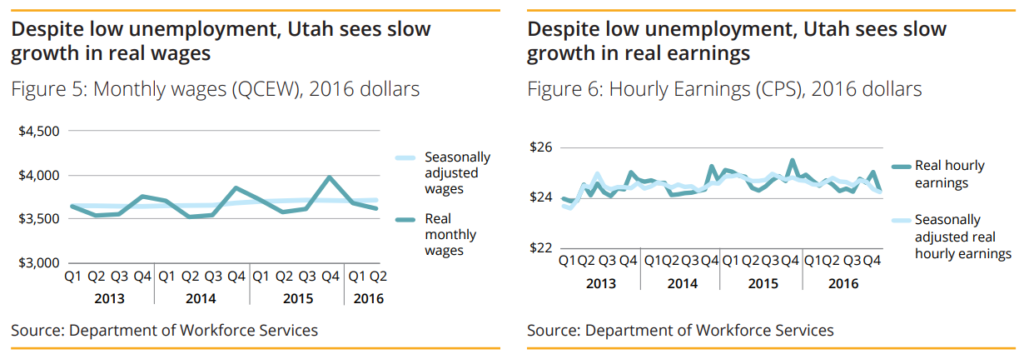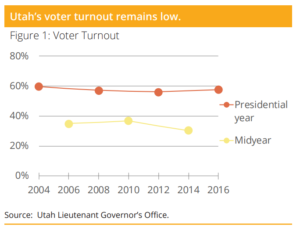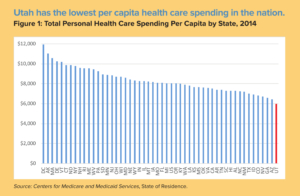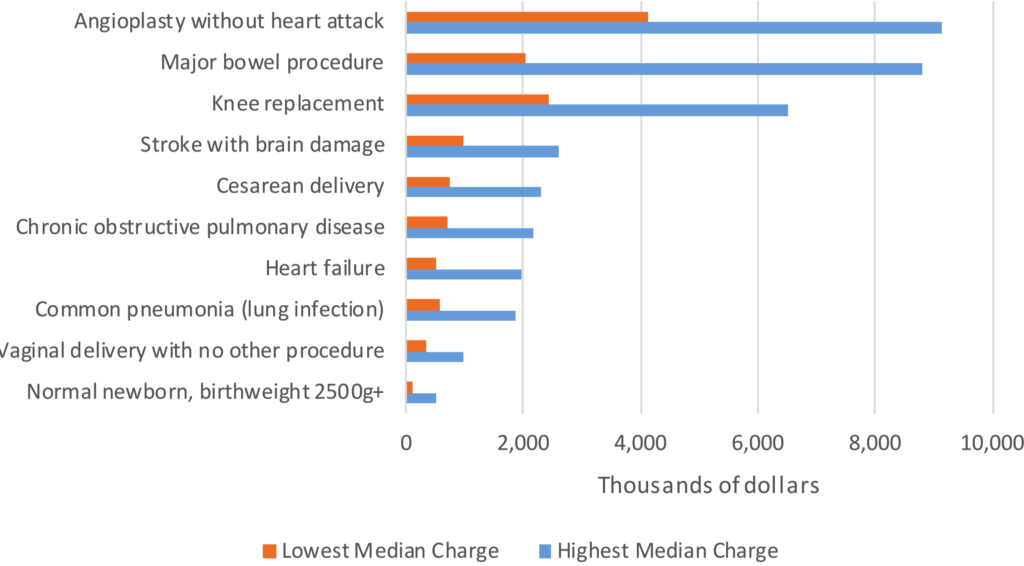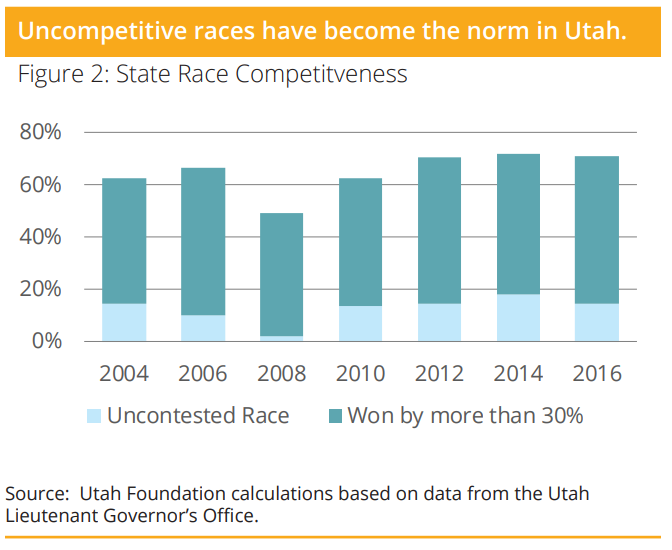Each December, Utah Foundation’s Board of Trustees gathers to look back over the previous year’s accomplishments. As part of the review, the board ranks the year’s research findings based on which findings they found most remarkable. The following are the top 5 findings of 2017.
Number 5: Despite experiencing below-average unemployment rates for the past four years, wages were not increasing as expected in a tight labor market. In May 2017, Utah Foundation released Help Wanted: Workforce Participation, Wages, Job Desirability, and Skills Gaps (www.utahfoundation.org/reports/help-wanted-workforce-participation-wages-job-desirability-skills-gaps/). The report focused on Utah’s worker shortage identified four principal contributing issues: a tight labor market, low wages, job desirability and skills gaps. Among its key findings was the discovery that the labor shortage in Utah had not translated into the sort of increases in compensation that one would expect.
Number 4: Utah’s 2016 voter participation was 39th in the nation, representing a substantial decline over the past 40 years. In October 2017, Utah Foundation released Checking the Box: The Latest on How Utahns Vote (www.utahfoundation.org/reports/checking-box-latest-utahns-vote/). The report found that, in relation to the national average, Utah’s voter participation in the 2016 presidential election was low: 39th in the nation. In previous decades, Utah had greater participation – as high as 70% in 1976 – and was far above the national average.
Number 3: Utah had the lowest impatient admission rate per 1,000 and the shortest average length of hospital stay in the country. In December 2017, Utah Foundation released the first installment in its new Utah Health Cost Series. The report, Bills of Health: What’s Driving Medical Service Costs in Utah, found a lot of good news (www.utahfoundation.org/reports/bills-health-whats-driving-medical-service-costs-utah/). For instance, Utah’s health care spending per capita is the lowest in the nation. For hospital care, only Arizona spent less per capita in 2014. Utah’s low per capita hospital spending is likely due to Utah’s hospital admission rates; our state had the lowest inpatient hospital admission rate per 1,000 in the nation. Generally, inpatient hospital admissions account for the greatest proportion of hospital care costs, as opposed to outpatient services. Utah also had the shortest average length of hospital stay in the country.
Number 2: Hospital charges for the same procedures vary dramatically across the state. Bills of Health also found that the pricing variation among hospitals in Utah can be remarkable. Utah Foundation looked at certain instances with major price variations where we could not attribute the difference to length of stay or quality of care. These differences merit closer attention from the public, policymakers and the medical community.
The Number 1 Finding of 2017: Uncompetitive races are the norm. In 2016, 71% of Utah’s state races were won by a margin of greater than 30%. Checking the Box looked at race competitiveness, one of the factors to consider when examining voter turnout. In the past decade, most races in Utah have either been won due to the lack of an opponent or were uncompetitive. In 2016, 71% of Utah’s state general election races – those for Governor, U.S. Senate and House, and State Senate and House – were won by a margin of greater than 30%. Over the past seven general and mid-year election cycles, more than 60% of state races were uncompetitive.
Categories:


